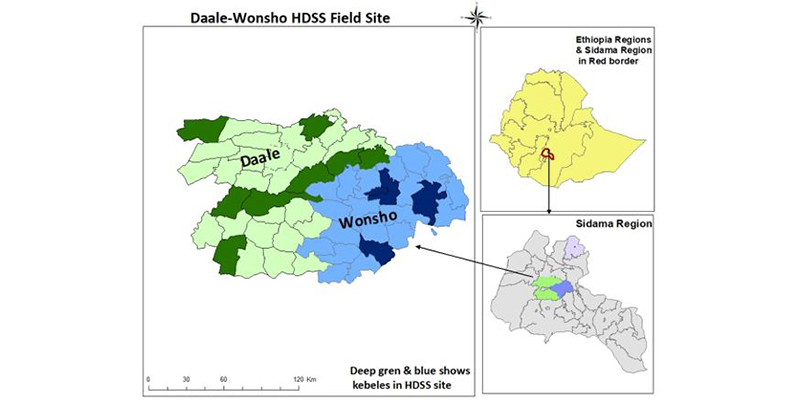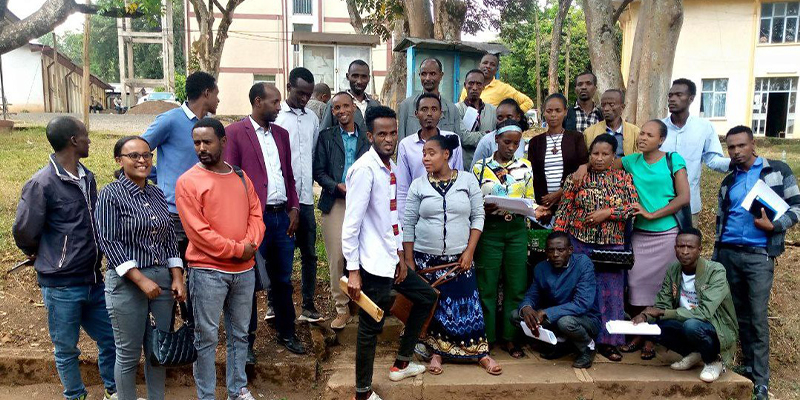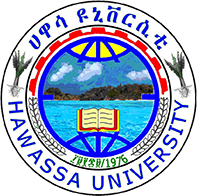Cohort Profile: The Dale-Wonsho health and demographic surveillance system, Southern Ethiopia:
-
The Dale-Wonsho cohort is an open population cohort established in 2017 in rural southern Ethiopia. Its primary objective is to provide a core framework for clinical trials and generate longitudinal epidemiological data that can supply up-to-date evidence and inform decision making at both regional and national levels.
-
The cohort consists of 12 kebeles (a kebele is the lowest administrative unit in Ethiopia) that include all individuals permanently living in the area, with a population of 69 021 people registered as of 2017, when the study began. At the time, approximately 51.5% (35 582) of the population were male and 48.5% (33 439) were female. Women of reproductive age account for a quarter of the total population.
-
At baseline, the participation rate was 100%; however, due to various factors such as migration, death or refusal to participate, we observed a dropout rate of 0.08% between the first and second rounds of data collection.
-
Data on marital status, immunization, pregnancies, births, marriages, migrations and deaths were monitored and updated biannually. The project involves a multidisciplinary team, an excellent research setup and well-trained data collectors, and is affiliated with Hawassa University.
-
Cohort data are available upon request, provided that a comprehensive project proposal including details about planned use of the data is submitted.
About Dale-Wonsho HDSS
The Dale-Wonsho cohort is located in southern Ethiopia. It is one of the most densely populated areas in southern Ethiopia, with a population density of 533 persons/km2. The Dale district covers an area of 30212km2, situated at latitude 6.69310 or 60 41’35’’N and longitude 38.354610 or 380 21’ 17’’E, with a population of 268839 people and an estimated 53768 households. Dale district consists of 36 rural and two urban kebeles, which are the lowest administrative structures. Wonsho district covers an area of 14528km2, inhabited by 129730 people living in 17 rural and one urban kebele, with a total of 21857 households. Both districts are renowned for their coffee and crop production and sale. Dale district has 10 health centres and 33 health posts, whereas Wonsho district has five health centers and 17 health posts. Agriculture is the primary source of income for the inhabitants of the site, who primarily produce Enset (false banana), coffee, maize, teff, barley and a variety of fruits, vegetables and livestock. There is one government general hospital and 15 health centres that provide medical services, as well as 53 health posts and eight private clinics.
The Dale-Wonsho cohort was established in 2017 to address the lack of comprehensive health and demographic data in rural southern Ethiopia. This issue is particularly pressing in developing countries like Ethiopia, where resource constraints limit the ability to conduct regular registration, census and national population-based surveys and surveillance systems. As a result, there is often a dearth of health and demographic information at the community or population level, making it difficult to assess health trends accurately and identify areas in need of intervention. To help address this problem, the site was designed to provide reliable demographic and health indicators for a rural population. By establishing a continuous systematic registration of vital events, it aims to complement episodic demographic and health surveys (DHS) by collecting longitudinal data over time, often with multiple household surveys. This approach allows for a more comprehensive understanding of health trends and patterns in the region, enabling researchers and policy makers to make better-informed decisions about public health and development initiatives. Overall, the cohort serves as a valuable resource for both researchers and policy makers, providing them with accurate and up-to-date data to guide decision making and improve the health and wellbeing of populations in rural Ethiopia.

Figure 1. Map of Dale-Wonsho HDSS and the 12 kebeles of the study sites, Sidama region, Ethiopia.
Who is in the cohort and how often have they been followed up?
The Dale-Wonsho demographic and health survey system [HDSS] is an open cohort. We enroll new participants and update our database every 6 months, including 12 kebeles of all individuals who reside permanently in the area. Individuals who are visiting or have lived in the study site for less than 6 months are not considered residents. During the initiation of the HDSS in 2017, the study area was mapped, and a census of the population was conducted. The estimated number of households in the selected kebeles was 13965, with a total population of 69021 individuals registered. Following the baseline census, household and individual attributes have been updated biannually. All residents were assigned a unique 12-digit identification number comprising the 3-digit ‘Got’ code, 3-digit for Open HDS, 3- digit house hold number and a 3-digit personal number serially assigned to residents of each household. Individuals enter the cohort through initial enumeration, birth or in-migration and data collection is completed within 3 months. As such, we have a dynamic population under observation, and our sample size changes over time. We did experience some non-participation from households within the kebeles included in our study area. Specifically, we had a participation rate of 100% at baseline, all households agreeing to participate in the first round of data collection. However, due to factors such as migration, death or refusal to participate, we observed a dropout rate of 0.08% between the first and second rounds of data collection.
What has been measured?
The site collects longitudinal, population-based data on demographics (including births, deaths, marriages, pregnancies and migrations), health and socioeconomic information from the surveillance population. During the baseline survey in 2017, data were collected on different variables such as socio demographic characteristics, birth, and income, family planning and disease conditions. In the second round and third round, it has added variables such as detailed birth information, immunization, antenatal care follow-up, migration and marital status changes. In upcoming rounds, the survey will expand to include an additional district, and there are also plans to implement verbal autopsies using World Health Organization standards, as well as to collect data on other diseases. There is a plan to link data with other datasets.
Collaboration
- National
- International

Data collectors and supervisors on the site.
